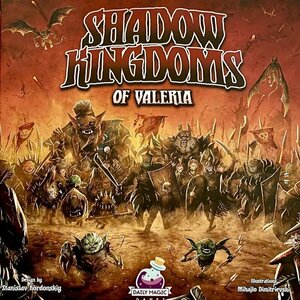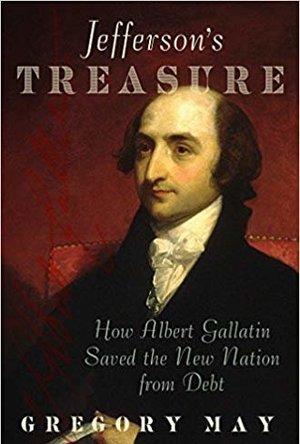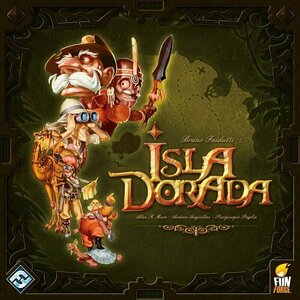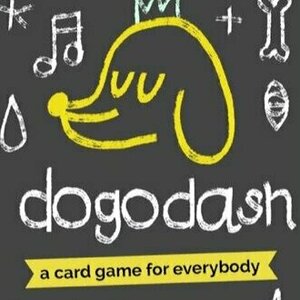Purple Phoenix Games (2266 KP) rated Shadow Kingdoms of Valeria in Tabletop Games
Jan 5, 2022
Shadow Kingdoms of Valeria is a game of worker placement and dice drafting/pool building in which players are trying to amass the most VP by the end of the game. Played over a series of rounds, players will take turns moving their Warden, drafting dice, and performing various actions. To setup, place the main board in the center of the play area. Shuffle and place the Battle Plan deck, Award cards, and Champion decks in their corresponding locations. Fill the dice bag with the requisite number of dice for your player count, and draw/roll/place the listed number of dice in each of the 5 Shrines (areas) of the main game board. A specified number of Gems are placed in the appropriate Shrine, and each player places their score marker on the 0 space of the score track. Each player receives a player board, random Campaign Map, Warden and Conquest Markers in their chosen color, as well as markers for Gold, Influence, and Magic. Choose a starting player, and the game is ready to begin! The setup for a 2-player game is pictured below.
On your turn, you will move your Warden from its current location to one of the other 5 locations on the board. Whichever location you choose dictates what actions you may take this turn, and are as follows: Gem Shrine, Magic Shrine, Champions Shrine, Gold Shrine, Tactics Shrine, or your own Camp. When placing your Warden at any location (with the exception of your own Camp), you will first select one of the dice found at that Shrine and place it on an open space of your player board. You may not move to a Shrine if it has no dice! After taking a die, you may perform the action associated with your chosen location. The Gem Shrine allows you to take 1 Gem, which can be used to manipulate dice in future turns. At the Magic Shrine, you may gain 2 Magic or claim 1 Award card. Magic can be spent in the game to manipulate dice or partially refresh the Champion/Battle Plan decks, and Award cards give you VP and can be claimed once you have met their requisite conditions. The Champions Shrine grants you the opportunity to buy a Champion card. Champions can provide either Immediate, Ongoing, or End-Game effects. The Gold Shrine allows you to gain Gold (used to purchase Champions and Battle Plans), and the Tactics Shrine allows you to buy a Battle Plan to be placed in your reserve on your player board.
The final location, your own Camp, is on your player board. When you place your Warden here, you are committing to perform a Battle. To do so, select which Battle Plan you wish to complete (either from your reserve, or pay Gold to buy directly from the Battle Plan line), and place it on your player board. All Battle Plans have certain dice requirements that need to be met in order to be completed. Select and manipulate which dice you want to use for your chosen Battle Plan, and add up your total Strength. Compare your Strength to your Influence marker – the lower of the two will be your total strength for this battle. Check the chart on your player board to find the number of VP you earn for the total Strength level achieved in the Battle, and immediately move your score marker the appropriate number of spaces. After performing a Battle, you get to level up your player board. During the game setup, each player receives 10 Conquest Markers that are housed on their player board, blocking/locking certain bonuses, abilities, and dice slots. After a Battle, you may remove 1 Conquest Marker from your player board (granting you a new bonus/ability for future turns), and place it on your Campaign Map. Campaign Maps have nine different slots that will grant you differing rewards. Once you have moved your Conquest Marker, return all dice used in this Battle to the dice bag, and move your completed Battle Plan card to the side of your player board. Your turn then ends and the game moves to the next player.
The game continues in this fashion, with players moving their Wardens, collecting dice, and performing actions, until one player has completed their 7th Battle Plan. The round continues until all players have had an equal number of turns, and then players add up any remaining VP. The player who has accumulated the most VP is then declared the winner!
It really should come as no surprise to you that I love this game. Beyond just the Valeria-verse theme, though, the gameplay is more strategic than I originally thought. Yes, it’s a worker placement and dice drafting game, but the underlying strategy is really what makes it great. You see, the dice in the game have 3 different elements that affect your strategy. First is the color: each color matches a Faction, and different Factions are required to complete specific Battle Plans. Next, is the actual die value: you want higher numbers to get a higher Strength, which equates to more VP when completing Battle Plans. And lastly is the discount: depending on the face value of the die, you will receive a discount towards purchasing Champions, Battle Plans, or collecting gold. The lower the face value of the die, the higher the discount, and vice versa. So yeah, maybe taking a 1 value die won’t really help in the Battle Plan, but the amount of gold it allows you to collect might be worth it. You have those 3 things to consider for dice alone! And that doesn’t even take into account which Champions you might want to buy, or what Battle Plans would be beneficial to you.
Another neat strategic element are the Conquest Markers on your player board. Everyone starts with the same number/placement of Conquest Markers, but as the game progresses, players may resolve them in various ways. There is no ‘correct’ order in which to move Conquest Markers – it all comes down to your strategy. Maybe you want more dice right off the bat, so you remove those first. Or maybe you want to be able to reserve more than 1 Battle Plan at a time, so you go for that one. It’s going to be different for every player, and it’ll be different every game. It all depends on the layout of the main board, and which dice and actions are available to you at any given time. There are so many strategic considerations throughout the entire game, and it keeps all players actively engaged.
Components. No surprise here, but the component quality is great, which is to be expected of Daily Magic Games. The cardboard is all thick and chunky, the wooden tokens nice and sturdy, and the cards are easy to manipulate and clear to read. The artwork is, in my opinion, one of the greatest things about the Valeria games, and Shadow Kingdoms is no exception. When getting the game set up, sometimes I find myself just looking through the cards and really appreciating the artwork. So all in all, great production quality here.
Does Shadow Kingdoms of Valeria climb the ranks to my favorite Valeria game? Not quite, but I have to say honestly that it’s getting there. The gameplay is solid and straightforward, the strategic implications are vast, and the components make the game feel awesome. And to get the Monster perspective in this universe is a neat twist that I otherwise would not really have thought of. If you’re a fan of the Valeria games, definitely check this one out. Or if you’re just a fan of worker placement, with some unique elements of drafting, then I highly recommend this one as well. Purple Phoenix Games gives it a mighty 5 / 6. Check it out. I don’t think you’ll be disappointed.
Sassy Brit (97 KP) rated Jefferson's Treasure: How Albert Gallatin Saved the New Nation from Debt in Books
Jun 5, 2019
So who was this man that undid Alexander Hamilton’s fiscal system, rejecting it along with Madison and Jefferson? Because both Presidents did not understand the financial system, they depended on Gallatin to reform it. Gallatin arrived in America in 1790 from Geneva and rose up to become a trusted advisor of the Republicans. Six years before Jefferson was elected President, Gallatin’s Pennsylvania neighbors rebelled against the tax on whiskey. He supported them in principle but opposed the violence that ensued, burning the local tax collector’s house, robbing the mail, and marching on Pittsburgh.
The play “Hamilton” uses revisionist history. The real Hamilton believed in big government and wanted to continue funding federal deficits. He based his theories on the British who used the money to fund their large military conflicts, believing that the ability to borrow endless amounts of money would allow the new United States to become a great nation. Jefferson and Madison thought Hamilton’s system, straight from the British way, was tainted with tyranny. As May noted, “It made the people pay obnoxious taxes in order to fund interest payments on a mounting federal debt and the costs of an expensive military establishment. It shifted money from ordinary taxpayers to the relatively few rich men who held the government’s bonds. That was just the sort of thing that had led Americans to revolt against Britain in the first place.”
May believes, “The hip-hop immigrant hero of the Broadway musical is a myth. The musical might be a great work of art, but is relies on misconceptions of Hamilton. He was not an immigrant, but a migrant within the British Empire. Also, he was not a man of the people, as Gallatin was, but an elitist.”
While Hamilton committed to paying only the interest on the government’s debt, Gallatin committed the government to repaying fixed amounts of the principal each year. He also insisted that the government should never spend more than it earned except in times of war. By slashing federal expenses, Gallatin was able to get rid of the tax on whiskey and abolish the entire internal revenue service.
The Republicans, an agrarian society, distrusted these elitists where two-thirds of the government debt belonged to a few hundred very wealthy men residing mainly in Philadelphia, New York, and other mercantile cities. They saw Hamilton’s plan of collecting taxes from ordinary citizens as a way for a few rich men to become even wealthier. Implementing these excise taxes required government officials to inspect, quantify, and mark the items subject to tax.
The Hamilton system benefited the wealthy debt holders and spectators at the expense of the average taxpayer who had to pay the interest. The government would borrow more than the people could pay. Hamilton tried to hide how much money the government was actually spending and spiraled the debt higher and higher.
This was an important part of the British tax base, and “I wanted to show how unpopular it was. Hamilton and company were resented because they created a tax collection network that affected the lives of ordinary citizens. The excise tax is a form of internal taxation, while tariffs are a form of external taxation that fell on the well to do. Remember mostly the well to do bought imports. The Republicans once they came to power relied on import duties rather than excise taxes.”
May further explained, “When Jefferson and his administration came to power it was Gallatin who got rid of Hamilton’s deficit finance system and cut taxes. By the time he has left office he has repaid half the federal debt and set up a program for repaying the rest.”
Anyone who wants to understand the early economic systems of the Founding Fathers will enjoy this book. It shows how Gallatin, by killing Hamilton’s financial system, abolished internal revenue taxes in peacetime, slashed federal spending, and repaid half of the national debt.
Purple Phoenix Games (2266 KP) rated Cthulhu Realms in Tabletop Games
Jun 12, 2019
In Cthulhu Realms, a deck-building game, you are a Cthulhu cultist that is trying to drive your rivals literally insane. By gathering followers, collecting artifacts, and discovering new locations, you will gain enough power to influence the sanity of those who would oppose you! On your turn, you will play cards from your hand to Conjure (acquire new cards from the communal pool), Draw/Discard cards, Gain/Lose Sanity, or Abjure (permanently discard cards from the game). The game ends when a player is reduced to zero sanity – and the player who has retained their sanity is the winner!
I love deck-building games. I really do. I think it’s a neat mechanic that allows you to customize your strategy with every play. So I enjoy playing Cthulhu Realms because of that element. And that’s kind of where my enjoyment ends with this game. Don’t get me wrong – it’s a decent game. I just have a couple of issues with the actual cards and abilities. The cards themselves are very reliant on iconography to communicate powers/abilities. Props to the player boards for having a quick reference for the basic actions, but I still always keep the rule sheet on hand for the in-depth explanation as I play. And even then, the rule sheet still has a bit of ambiguity on how some of the powers work. I wish they’d provided a couple of examples because sometimes I still get confused by certain combinations of icons. Just a little more detail in the rule sheet could alleviate some of the ambiguity of the icon abilities.
For card abilities, each individual card can have anywhere from 1-3 special abilities. The tricky thing is that the abilities do not all have to be used at the same time. So I could use 1 ability from a card, use an ability from a different card, and then come back to my first card and use another of it’s printed abilities. And with a hand of 5 cards every turn (not counting additional cards you may draw…), it can be hard to keep track of which abilities you’ve already used that turn. On top of that, many of the abilities have prerequisites – you can’t use that specific ability unless you’ve already played/have in play the requisite card. Some abilities only have 1 prerequisite, but some have 2, which just adds another layer of bookkeeping to your turns. Not only are you trying to remember which card abilities you’ve already used, but you’re also trying to keep track of your cards/actions that turn that could unlock other card abilities. The rule sheet suggests sliding a card to one side of your play area once you’ve used one of its powers. But again, if it has more than 1 ability on it, you’ve got to remember which ones you’ve used/haven’t used yet, regardless of where they are in your play area. This is a competitive game overall, but with all of these elements to track on your turns, it saps the tension from the game and makes it feel a little more luck-based than strategic.
To alleviate some of my grievances, I think the game could just have more cards with fewer abilities on each. That would make it much easier to execute all of your turns. And eliminate some of the ability prerequisites – having them on most of the abilities just adds another element for you to keep track of, and it feels a little unnecessary. If the turns were a little more clear and concise, I would like this game a lot more. It’s not bad, it just gets bogged down a little bit with too much action on your turns. That’s why Purple Phoenix Games gives Cthulhu Realms a 6/12.
https://purplephoenixgames.wordpress.com/2019/03/22/cthulhu-realms-review/

PI.EXCHANGE
Lifestyle
App
WHY WE MAKE THIS APP PI.EXCHANGE strives to change the way the personal data ecosystem operates. We...
Purple Phoenix Games (2266 KP) rated Isla Dorada in Tabletop Games
Jun 24, 2021
Isla Dorada is a set collection, hand management, bidding, exploration, adventure card and board game from a team of designers including Bruno Faidutti and Alan R. Moon. The players are a cohesive exploration team which has crash landed on an island, and they seek the riches within. To do this, the players will be traveling around the island attempting to satisfy their Destinies and pick up treasures along the way. But not every player wants to go where the others want to go. What to do, what to do…
Follow the setup instructions in the rule book until you have a board with turn tracker discs and the players’ shared totem pawn upon the crash site. Each differently-backed card deck will be shuffled and each player will receive cards drawn from these decks as their starting collection. The youngest player will receive the first player marker and will start the game by placing the totem on a path heading away from the crash site where they would like to go and announce the amount of cards they are willing to bid (even zero cards) in order to convince the party to travel there. The game is now on!
Players will be collecting Adventure cards to be used as currency when bidding on party travel in order to fulfill goals on their personal Destiny cards. When traveling each turn, a turn marker disc will be placed on the location the party has visited in order to track the movements for said Destiny cards, which mostly have lists of areas to be visited. They will also be attempting to avoid certain areas of the island which will trigger their Curse card that awards negative points at the end of the game. During two turns of the game players will be able to draw and choose cards from the Treasure deck that will help award points at game end as well. The winner is the player who best collects a combination of completed Destiny cards, Treasures, money, and considerations for negative points from Curses.
Components. People, Isla Dorada boasts some of the best components in a game we have seen. The totem pawn and Bigfoot/Leviathan pawns are simply amazing. The art throughout the game is mesmerizing and gorgeous. So much attention to little details have gone into this production and the final product is a stunning game that you want to keep playing because the component are just so fabulous.
But the game play? It is awesome with the right game mates. If you can play this with your enthusiastic friends, each turn will be simply exciting and joyous to play. Getting friends and family members to shout at each other their bids to move the party toward Septris instead of Methritis because their Curse card is brutal is downright great entertainment. Watching paths being cut off by the Bigfoot and Leviathan and having people visibly create alternate pathways and tactics can be enjoyable as well.
So do I like this game? Yep! It has beautiful components, is somewhat easy to teach to players of all experience levels, and leaves you satisfied when the game is over. This is not a serial, “play every game night” sort of title, but with the right group and mood, this can be a dynamite experience. If you are looking for a high-energy adventure game with lots of player interaction, set out to find a copy. I do wish you good luck, though, as a copy may be hard to come by. Alas, Purple Phoenix Games gives Isla Dorada a totemic 15 / 18. At least we will always have Kilitiping…
Purple Phoenix Games (2266 KP) rated Dogo Dash in Tabletop Games
Oct 15, 2020
Disclaimer: We were provided a PnP version of Dogo Dash for the purposes of this preview. The artwork and colors may see some changes between this preview and the final production, but is the most current version. -L
Dogo Dash is a trick-taking party game in which players are trying to earn points by collecting the most cards by the time the draw deck runs out. Setup is quick and easy – shuffle the deck and deal 4 cards to each player. Looking at their hands, players will then select one card to play this turn, and will place it face-down on the table. Once all players have chosen their card, everyone will reveal their cards at the same time. The player that played the strongest card is the winner for the turn, and collects all of the played cards. The strength of the cards is as follows: Cookie beats Bear and Dog, Bear beats Dog and Cat, Dog beats Cat, and Cat beats Cookie (and therefore all other cards this turn).
In the event of any ties, where multiple players have played the strongest card, play continues with a small change – the cards played in the round of the tie remain on the table. The tied players select another card from their hand and reveal it simultaneously. Whomever wins this tiebreaker collects all the cards. If the tiebreaker ends in another tie, then the tied players split the cards between themselves. If any player plays a Good Boy card, that round automatically is considered a tie, and a tiebreaker commences with all players. All players draw back up to 4 cards, and play continues in this fashion until the draw deck is empty. The player with the most cards at the end of the game is the winner!
As you can see, this game is pretty simple to learn and fast to play! The elements of War and Rock, Paper, Scissors are evident, but altered with more ‘character’ options and a more involved hierarchy of power. Unlike traditional Rock, Paper, Scissors, the animals/cards of Dogo Dash are more versatile in play. Instead of only beating one other type of card, each card will act differently based upon what other cards are played that turn. For example, Dog always beats Cat – unless someone also played Cookie. Because Cat beats Cookie, which beats Dog, so Cat wins this round! Instead of relying simply on numerical order to determine the hierarchy of power, the game feels more engaging and fun to play.
Another neat element is the inclusion of the Good Boy cards. When played, they automatically force a tie. All players then must participate in the tiebreaker. The Good Boy cards could be a strategic way to bag a ton of cards for yourself – forcing a tie and then winning the tiebreaker earns you essentially 2 rounds worth of cards! Or they could just be a silly way to interfere with opponents or just to keep a round from ending. There are also a couple of special card combos that can be played in a round, but I will leave those for you to discover on your own!
So all in all, how does Dogo Dash perform? I think it is a fast, fun, and light little game that can be played in many different situations. Whether you need a small filler game, are introducing newer gamers to the hobby, or want to find a game that is kid-friendly, Dogo Dash fits the bill. The gameplay feels familiar, but with a few twists, and that makes the overall game fun to play. Definitely check out Dogo Dash once it hits Kickstarter – you don’t want to miss out on this treat!
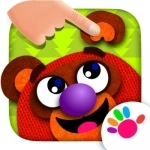
Puzzle Game for Kids! Create&Play! FREE
Games and Education
App
Assemble these cute forest animals out of colorful parts and watch them come to life right under...

My Boo Virtual Pet & Mini Game
Games and Entertainment
App
Meet Boo, your very own virtual pet! Enjoy countless hours of fun in this addictive and entertaining...

Trail Wallet Travel Budget App
Travel and Finance
App
LESS TRACKING, MORE TRAVELLING Trail Wallet is free for the first 25 items, with an In App Purchase...
